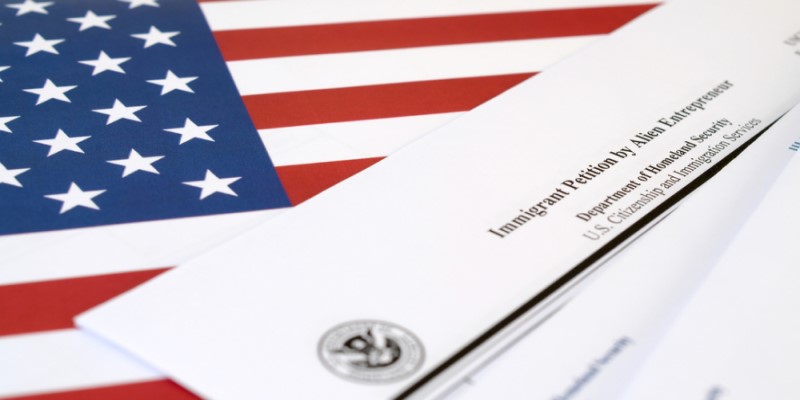
By David Hirson and Mona Shah
It has been nearly five months since Congress passed the EB-5 Reform and Integrity Act of 2022 (“RIA” or “new law”). This new law brought about a host of changes and (much needed) integrity measures to the EB-5 program, in addition to a five-year re-authorization to the regional center program. There was an element of relief and some jubilation among stakeholders, as the previous nine-month hiatus had started to create a doubt the program would ever achieve Congressional approval to recommence. Notwithstanding this, RIA also left the EB-5 program in a state of flux that has remained highly ambiguous as to how investors, projects, and the attorneys handling their cases can move forward.
In a rather autocratic attitude, USCIS decided to interpret the implementation of the RIA as requiring “all” Regional Centers – including previously designated centers – to seek reauthorization before filing I-526 petitions. This, in effect, created a complete cessation of business. Following this determination, USCIS then failed to provide clear guidance on the reauthorization process for these centers, indicating that they are, in effect, made inactive by the new law. Unsurprisingly, the Industry retaliated. Two lawsuits were subsequently filed by regional center entities (Behring Regional Center and Invest in the USA along with other regional centers) against USCIS, alleging that they had caused irreparable financial harm, misinterpreted the RIA, and did not follow proper procedure when establishing new regulations.
On June 25, 2022, the Northern District Court of California sided in favor of one of the plaintiffs, essentially putting regional centers back in business. After months of confusion from USCIS and the stalled regional center program, the district court ruling in Behring Reg’l Ctr. V. Mayorkas (“Behring”) has reauthorized all regional centers previously certified before the program lapsed a year ago. Regional centers could finally begin taking in capital from investors and filing I-526 petitions, though the process may not be as straightforward as it once was.
Regional Centers vs Direct EB-5
Firstly, it is important to emphasize that all regional centers, including previously designated ones, must comply with the RIA. This requires regional centers to re-examine certain operations, such as the use of a foreign agent or fund administrator.
The decision in Behring currently allows existing regional centers to continue to operate according to the new standards introduced by the new law. Likewise, USCIS will continue to process I-526 petitions from immigrant investors through those centers. Note that in June 2022, USCIS issued two new forms for filing individual investor cases. A new Form I-526 for direct (entrepreneur) cases and a new Form I-526E for regional center cases. Though it is possible that the UCSIS will respond to this judgment by requiring authorized regional centers to file new I-956 petitions before they can operate as before, USCIS cannot deauthorize those centers. “…(the) centers must presently be permitted to operate within the regime created by the Act. This includes processing new I-526 petitions from immigrants investing through previously authorized regional centers…” Behring Reg’l Ctr. v. Mayorkas, 22-cv-02487-VC, 12 (N.D. Cal. Jun. 24, 2022).
Any groups or projects seeking designation as a regional center must submit both a new Form I-956 and a Form I-956F to meet the requirements of the new regional center program designation as well as allow for individuals seeking EB-5 immigrant investor status to file their Form I-526E Immigrant Petition. Existing regional centers must have the business project approved by filing Form I-956F together with the Bona Fide Character forms (Form I-956H) for each person having any management control over the regional center, the New Commercial Enterprise (NCE), and the Job Creating Enterprise (JCE).
The Form I-526E individual investor applications for the regional center project can be filed when USCIS issues a receipt for the Form I-956F but do not have to wait for actual adjudication. The Form I-956F is effectively an approved “exemplar” once approved by USCIS.
Direct projects were unaffected by the original regional center program lapse in June 2021 and have always remained in operation. Therefore, the filing process remains largely unchanged, but all direct projects are required to use the new Form I-526 and to meet the integrity standards set forth in the new law.
Is there certainty to the process of filing given the recent decision?
Unfortunately, no. While the district court’s ruling officially authorized all previously certified regional centers, USCIS has only issued new forms which, through the instructions to the forms, allow Regional Centers and its investors to file Form I-526E petitions under the new law. In the more than five weeks since the court ruling, all USCIS has done is post a menial change to their website without offering any substantial clarity on the filing process. One question from the Q&A portion of their website stating that regional centers did not maintain their designation was removed, yet no new update was provided in its place. This has left many investors and developers scratching their heads as the agency continues to move at a snail’s pace and delay critical investments.
Under the RIA, migration agents and other representatives who are not registered broker dealers have to register with USCIS. At the time of writing this article, there are no instructions or application forms available to complete such registration. Penalties for failure to comply with registration requirements are severe.
Previous listening sessions with USCIS have so far proven unfruitful as EB-5 stakeholders spent hours relaying their questions and concerns to the agency with no answers. Thus, the EB-5 community appears to be presented with two options for the interim: 1) file now and wait for clarity via adjudication or 2) wait for USCIS to make a reasoned decision about how regional centers should be treated, as mentioned by the Northern California District Court which heard the Behring case.
The EB-5 program is coming back strong
The EB-5 program is showing signs of coming back with a vengeance.
- New special allocations of rural (20%) and Targeted Employment Areas (“TEA”) (10%) are stimulating interest in filing Form I-526E cases as soon as possible.
- Integrity measures bring confidence both for Regional Center and single investor direct hire cases.
- Very exciting benefits for Chinese Mainland born individuals.
- Chinese can jump from a wait from filings before November 2015 and get to the top of the line in a current category.
The old problems remain and need addressing by Congress and USCIS:
- Very slow adjudications (Currently published processing times for both previously pending and newly submitted Forms I-526 and I-526E are shown at approximately 60 months.
- Visa number availability (As so little adjudications have been completed in the past several years, all categories for all countries are current, except for mainland China-born applicant which are backed up to November 2015.)
- India, Vietnam, Korea and Brazil could run out of visa numbers in the relatively near future.
- Uncertainty of how to file cases as no real guidance or new regulations from USCIS.
At the end of the day, this is better movement than no activity for nine months!
DISCLAIMER: The views expressed in this article are solely the views of the author and do not necessarily represent the views of the publisher, its employees. or its affiliates. The information found on this website is intended to be general information; it is not legal or financial advice. Specific legal or financial advice can only be given by a licensed professional with full knowledge of all the facts and circumstances of your particular situation. You should seek consultation with legal, immigration, and financial experts prior to participating in the EB-5 program Posting a question on this website does not create an attorney-client relationship. All questions you post will be available to the public; do not include confidential information in your question.








